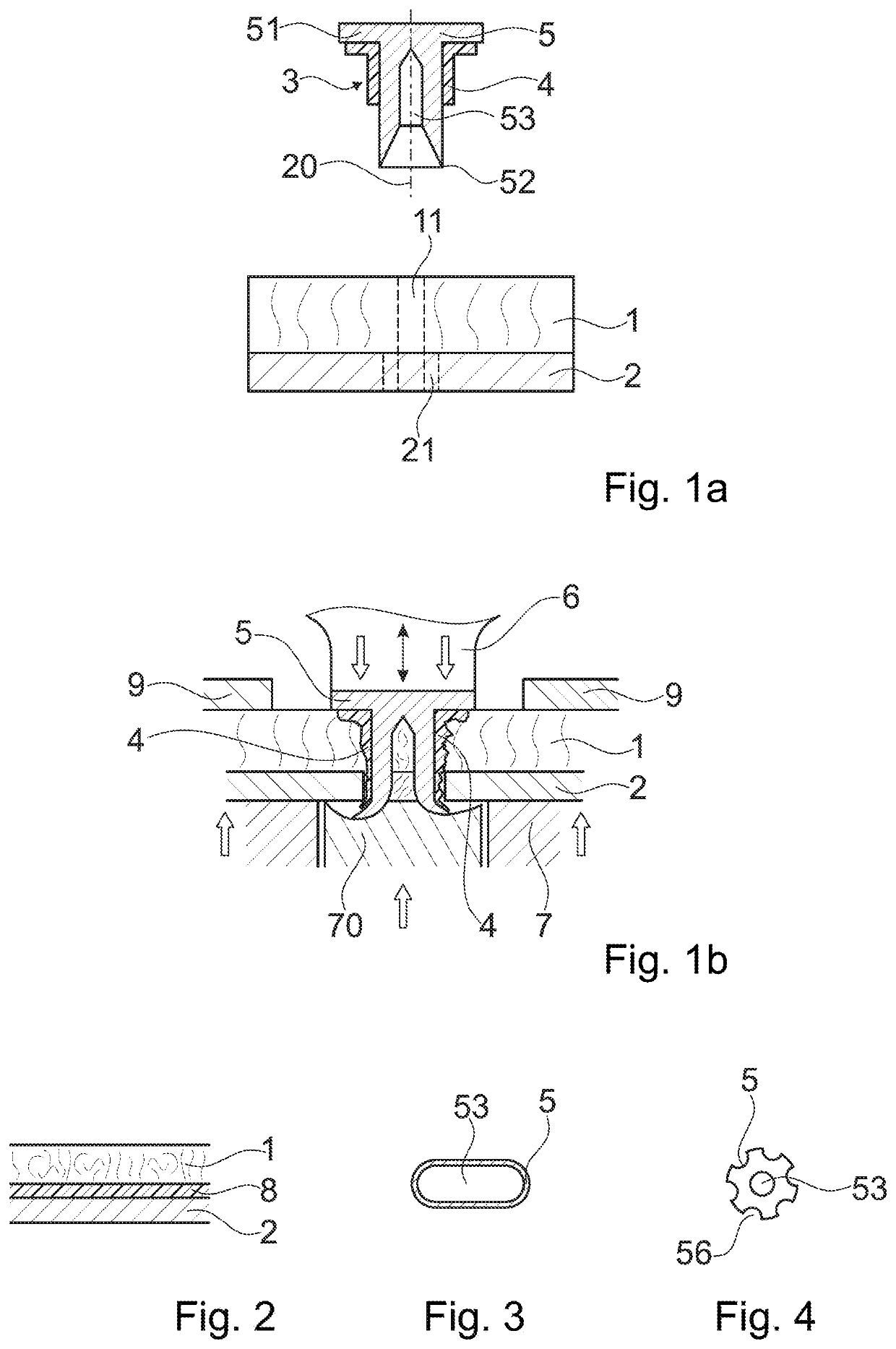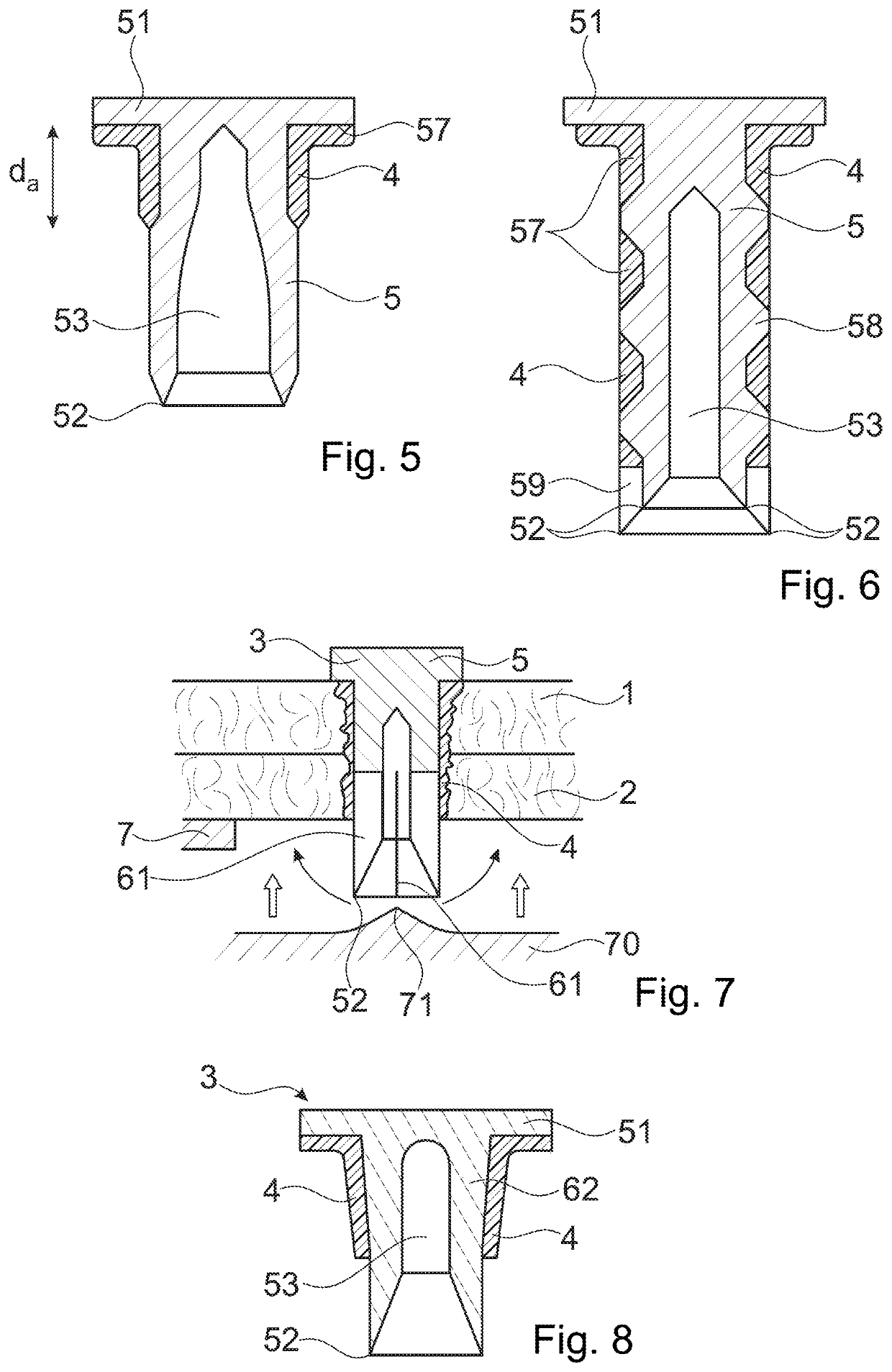Bonding objects together
a technology of objects and bonding elements, applied in the field of mechanical engineering and construction, can solve the problems of new challenges in bonding elements of these materials, substantial galvanic corrosion, and special difficulties, and achieve the effects of strong heating, high energy absorption, and potentially very fast processing
- Summary
- Abstract
- Description
- Claims
- Application Information
AI Technical Summary
Benefits of technology
Problems solved by technology
Method used
Image
Examples
Embodiment Construction
[0138]FIG. 1a depicts a basic set-up of embodiments of the invention. The first object 1 is a board or sheet, for example of a fiber composite material (fiber reinforced polymer material) such as a Carbon fiber-reinforced polymer (CFRP) or a Fiberglass. It has an essentially flat sheet portion with two, for example, essentially parallel broad surfaces. The broad surface that in the figures is the upper surface is herein termed “proximal” surface and the opposing surface is the “distal” surface.
[0139]The second object 2 is made of a metal. It also has a sheet portion with the proximal broad surface of the sheet portion lying against the distal broad surface of the first object's sheet portion.
[0140]In a variant shown in FIG. 2, between the first and second objects a further layer, such as an adhesive and / or separating insulating layer 8, may be present. Such additional layer may, for example, be formed of a thermoplastic material, or it may be formed of a resin, for example a not cur...
PUM
| Property | Measurement | Unit |
|---|---|---|
| glass transition temperature | aaaaa | aaaaa |
| size | aaaaa | aaaaa |
| temperature | aaaaa | aaaaa |
Abstract
Description
Claims
Application Information
 Login to View More
Login to View More - R&D
- Intellectual Property
- Life Sciences
- Materials
- Tech Scout
- Unparalleled Data Quality
- Higher Quality Content
- 60% Fewer Hallucinations
Browse by: Latest US Patents, China's latest patents, Technical Efficacy Thesaurus, Application Domain, Technology Topic, Popular Technical Reports.
© 2025 PatSnap. All rights reserved.Legal|Privacy policy|Modern Slavery Act Transparency Statement|Sitemap|About US| Contact US: help@patsnap.com



